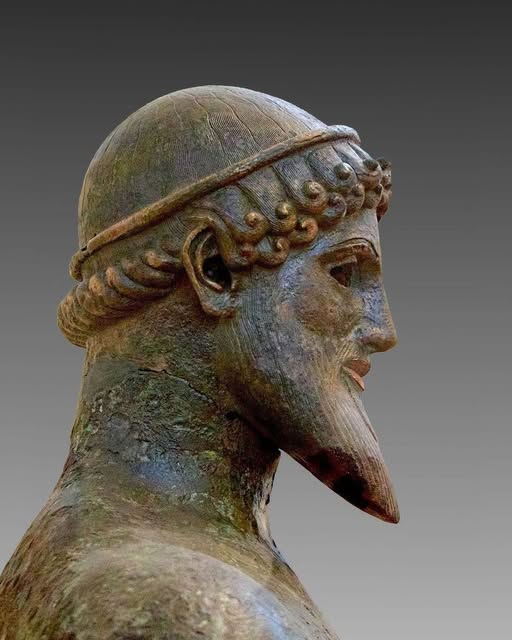
Bronze statuette of Poseidon. Found in the sea, in the Gulf of Livadostra in Boeotia. about 480 BC, National Archaeological Museum, Ancient Athens, Greece.
National Archaeological Museum in Athens: Classical 480 – 323 BCE
Some of the best examples of classical Greek art from excavations across the country and beyond are on exhibit at the National Archaeological Museum in Athens.
The classical era is ᴀssociated with the most important characteristics of what came to known as Greek civilization, and for creating some of the most influential Greek art.
Bronze Statues
Top row, left to right:
- Zeus of Artemision bronze statue. c. 450 BCE. Zeus (or Poseidon) with arms extended as if in the process of throwing a thunderbolt (or trident) found at Cape Artemision. 2.09 heigh.
- Bronze statue of a youth. Imitation or works of the second half of the 5th c. BC and the early 4th c. BC. Early Roman period. Unknown provenance (retrieved from the sea). Confiscated in Germany in 1998 and returned to Greece in 2002. Imitation or works of the second half of the 5th c. BC and the early 4th c. BC. Early Roman period.
Second row:
- Marathon Youth. Bronze statue of a youth studying an object. Circa 340 - 330 BCE.
Bronze statue of a youth studying an object. According to Kaltsas (242), the left hand was replaced at a later date with one in the shape of a lamp. - Bronze head of a boxer. About 330-320 BC.
Found at Olympia. The man is crowned with kotinos, the olive-wreath awarded to victors in the Olympic Games, of which only the stem is preserved. It is believed to be a statue of the famous boxer Satyros of Elis, who repeatedly won the boxing event at Nemea, Pythia and Olympia. The statue of Satyros at Olympia was the work of the Athenian bronze-sculptor Silanion. - Youth of Antikythera. Bronze statue found underwater at Antikythera. Circa 340 - 330 BCE.
It is know as “Youth of Antikythera” because it was found in the Antikythera shipwreck. The figure has been identified as either Perseus holding the head of Medusa, or Paris awarding the “apple of Strife”, to the most beautiful goddess, Aphrodite. Attributed to the Sikyonian sculptor Euphranor.




